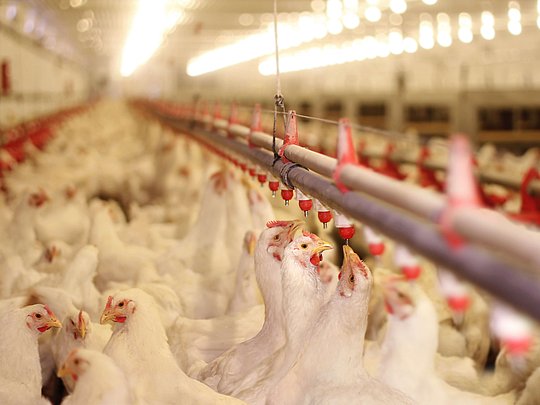Improve feed digestibility with the Performizer® Solution - Part 1
We are all aware of it. One of the objectives of any poultry producer is to feed the chickens with a balanced diet at least cost. In the past years, feed costs have steadily declined each year, but the pandemic quickly turned around the demand and supplies. This evolution results in the need for new alternatives to save feed costs. Find out in this article how to improve feed digestibility with the Performizer® Solution.

Feed accounts for the highest variable cost in poultry production, accounting for at least 60% of the total cost, especially in an intensive rearing system. Volatility in raw material prices and fluctuations in their availability contribute to the challenge of the poultry nutritionist to deliver a nutritionally balanced, least-cost diet formulation. Alternatives to traditional basal ingredients, such as alternative protein sources, are gaining momentum and, although they offer the feed formulator some flexibility in formulation, they bring potential digestibility challenges. Digestibility decreases, and the undigested part of the feed becomes more important. Phytogenics will not improve the digestible fraction of the feed, but they will target a better utilization of the non-digestible fraction.
The undigested part of the feed
A balanced feed is offered to the broilers in modern poultry production, but this can vary depending on the feedstuffs available. For more than 20 years, feed additives have been used to improve feed digestibility and allow more raw materials to help animal producers reduce their feed costs. Feed must undergo a series of physical and chemical actions before becoming simple, absorbable constituents called nutrients.

The body absorbs not all ingested feed: part of the feed is not used and passes through the digestive tract to be excreted in feces. Regarding energy, not more than 75% is available to the metabolism at the end of the gastrointestinal tract (GIT). In comparison, an ileal digestibility of 80% is currently observed for protein, which means that 20-25% of the organic matter is generally not available for animal metabolism.
In birds, the transit of feed for their digestion is relatively fast and lasting on average 24 hours. In addition, modern poultry genotypes have been selected primarily to enhance their appetite and, thus, challenging their digestive abilities. This means that the speed of digestion and absorption of the feed is essential.
How digestibility works?
Before being absorbed, ingested proteins and carbohydrates are degraded in the intestine by pancreatic enzymes. Then, further, digestion occurs by various enzymes produced at the brush borders, generating the small molecules (monosaccharides, amino acids, di- and tripeptides) that the enterocytes can absorb. Transport of these molecules through the intestine occurs mainly by the various membrane carrier proteins, for example, the sodium-glucose transporter (SGLT1), which carries glucose, and the peptide transporter (PEPT1) that transfers di- and tripeptides.
Study results show improvement

A lot of in-vitro studies have been carried out to estimate the digestibility of nutrients. These studies showed that both the transit time and the enzyme concentration play a significant role in digesting nutrients like crude protein. For example, crude protein digestibility can vary from 59% to 93% with different pepsin concentrations (Figure 1). Pepsin is an endopeptidase that breaks down proteins into smaller peptides. It is produced in the gastric chief cells of the stomach lining and is one of the main digestive enzymes in the digestive systems of poultry, where it helps digest the proteins. Given that in all trials conducted by Delacon, the average digestibility of crude protein was 77.6%, and the digestibility of energy was 70.6%, there is certainly room for improvement.
Figure 1_Digestibility of crude protein with different pepsin levels
Ready to get more details about the Performizer® Solution?

Manu De Laet
Manu De Laet graduated in 2009 as a bio-engineer at the University of Leuven, Belgium. He has a master’s degree in animal production. After earning valuable experience with phytogenics, Manu started working for Delacon as Global Technical Manager Poultry in September 2018. He is now specialized in nutrition and the effect of phytogenics on digestibility.










